테솔자격증/ WVC테솔 공부기록 UNIT5-8 |
HYERIN 2022-02-07 조회수 : 4,517 |
|
UNIT 5-8 START UNIT5. classroom management 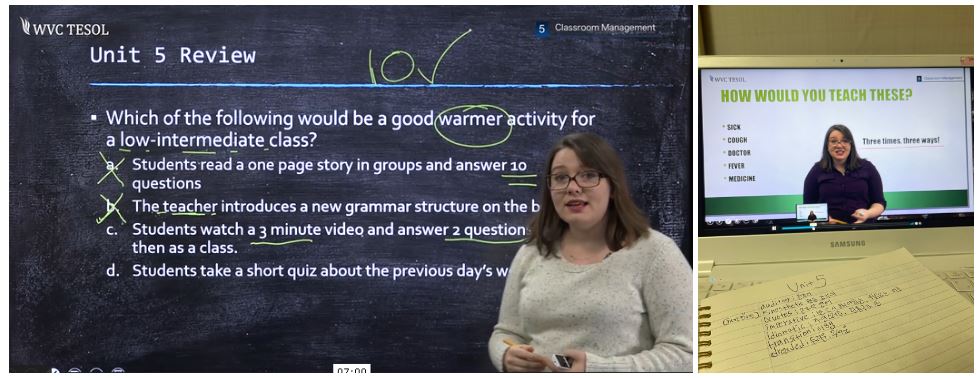 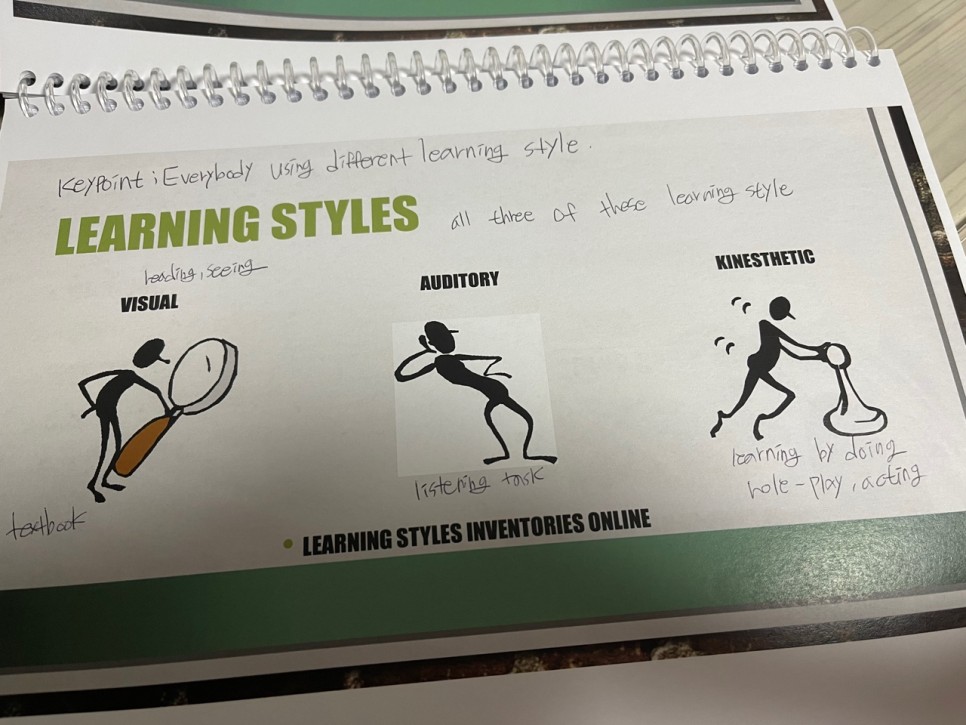 learning styles, warmers, clear instructions, choice, transitions, flexibility, grouping students, learning training, teacher talk time 유닛5에서는 어떻게 학생들을 더 집중시키고 관리할 수 있는지에 대해 배웠다. 주제가 굉장히 많았는데 먼저 leaning style에 대해 말해보자면 사람들은 모두 다른 learning style을 가지고 있기 때문에. visual, auditory, kinesthetic 이렇게 각자 맞는 학습 방법이 있다. 또한 가르칠땐 너무 fomal한 형식보다는 실제로 사용하는 형식으로 가르치며 학생들이 알아들을 수 있는 언어를 사용해야한다. 또한 자연스러운 표현이어야하며 짧게 하는것이 좋으며 문제를 풀 때 한 두문제 정도 같이 풀어보면서 알려주는 것이 좋다. 그리고 학생들에게 언제나 선택권을 주는 것이 좋다. 선택권은 더 집중력과 흥미를 높일 수 있지만 너무 많은 수의 선택권을 한번에 주는 것은 좋지 않다. 이것이 learner-cenrerd 방법이다. 그리고 위에 나온 주제들을 차례로 설명해주셨고 마지막으로 teacher talk time(TTT)에 대해 설명해주셨다. 학생들한테 설명할때는 선생님이 너무 많이 말하면 학생들이 이해하지 못한 채로 있을 수 있으니 최대한 적게 말하면서 학생들이 많이 얘기할 수 있도록 도와주는 것이 좋다. keep that in mind!! UNIT6. Types of assesment 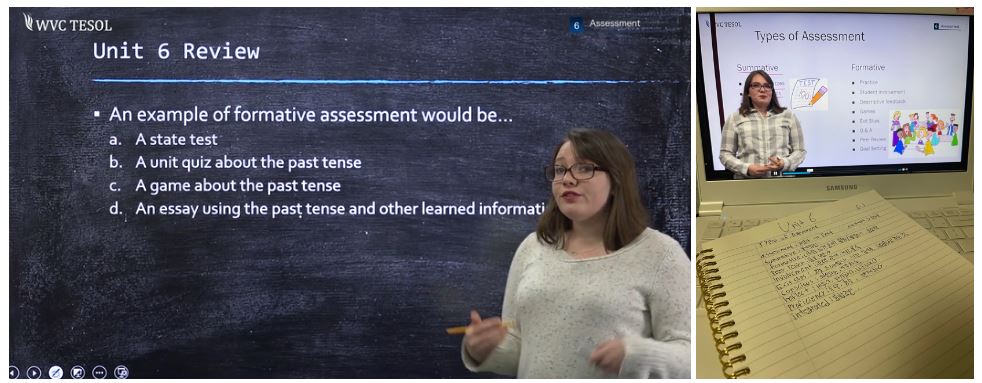 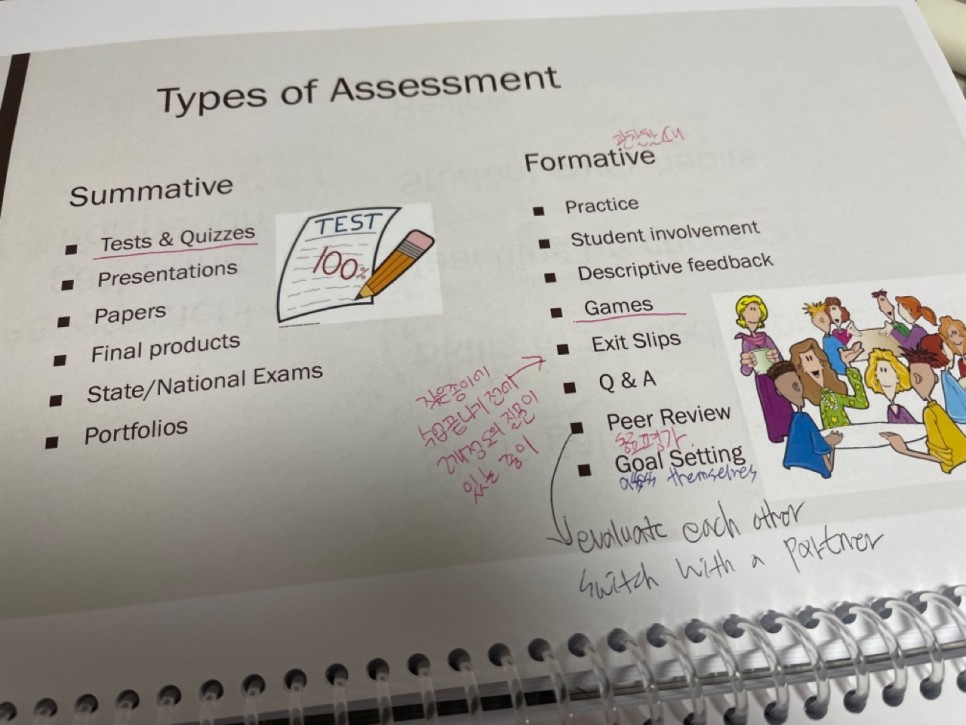 유닛6에서는 assesment에 대해 배운다. 먼저 assesment하면 보통 test를 바로 떠올리기 마련인데 assesment는 test보다 더 넓은 의미로 사용된다. assesment는 학생들에 대한 정보를 모으는 방법 중 하나이다. 예로 skills gained, skills that need improvement, teaching practices, student study habits, review가 있다. types of assesment에는 summative와 formative가 있다. summative assesment는 꼭 test&quiz일 필요가 없고 발표나 포트폴리오 등 다른 방법으로 진행할 수도 있다. formative assesment는 practice, games, q&a, peer review 등으로 진행할 수 있다. formative assesment tips&tricks는 1. Be conscious 2. Plan ahead 3. Don't tell the students what you're doing 4. Reflect 순이다. testing을 하는 이유는 학생들이 어떤 레벨인지 알 수 있으며 문제를 파악 할 수 있고 진행사항을 알 수 있으며 학생들이 어느정도의 언어를 하는지 알기 위함이다. mistake와 error의 차이점은 mistake는 아는 것을 틀리는 것이고 error는 모르는 것을 틀리는 것을 얘기한다. 따라서 이를 잘 구분하고 실수할 것, 모를거 같은 것을 미리 예상하여 어떻게 설명할지 계획해야한다. 그리고 실수는 멋진 것이라고 학생들에게 꼭 말해준다. "MISTAKES ARE AWESOME" summative와 formative의 차이에 대해 집중 공부하길 추천한다. UNIT7. Course design and lesson planning 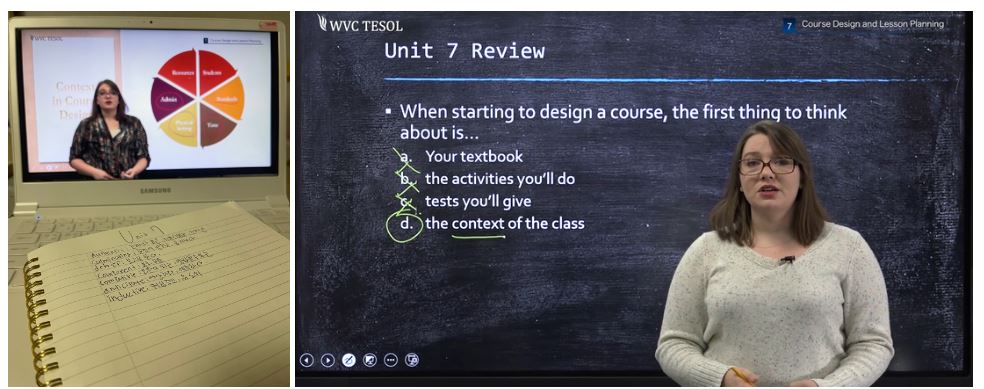 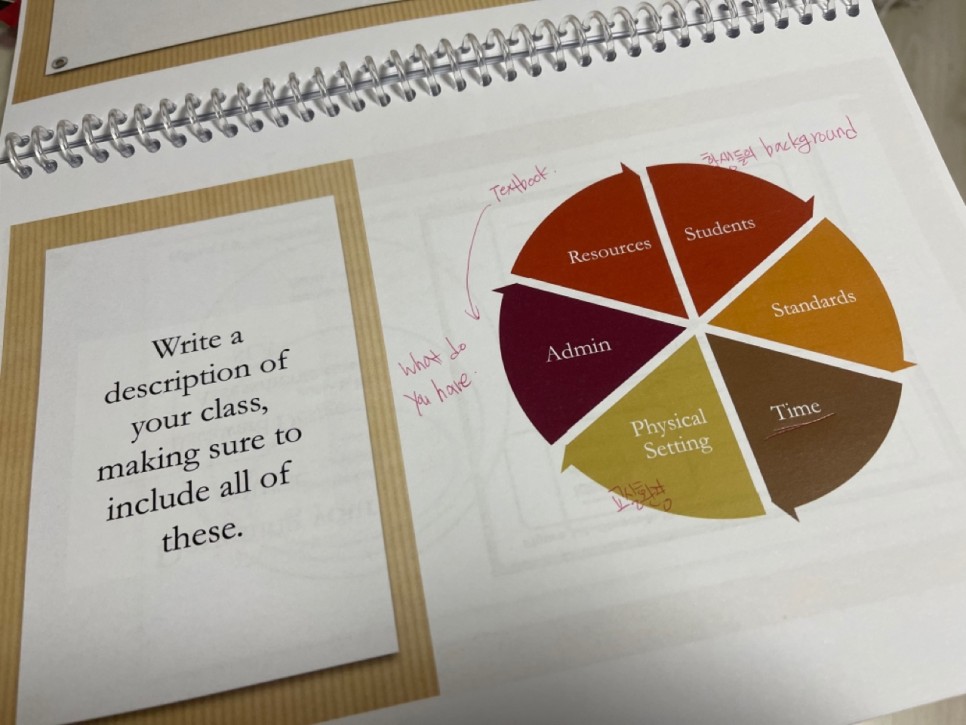 course design -textbook lesson planning designing a course 를 하려면 학생들의 배경은 무엇인지 어떤 언어를 사용하는지, 몇살인지 등 학생들에 대한 정보를 알아야하며 그 레벨을 가르치기 위해 어떤 능력이 요구되고 시간은 얼마나 주는 것이 좋으며 교실의 환경은 어떠한지와 administration과 resources에 대해 알아야한다. 그래서 이 모든 것을 포함하여 본인의 class를 설명하는 글을 작성해보라고 권유하셨다. 또한 커리큘럼에서 꼭 필요한 부분과 중요한 부분, 중요하지만 꼭 필수는 아닌것을 생각해보라고 하셨다. 다음으로 교재를 고르는 법에 대해 배웠다. 교재를 고를때는 talk to people, look online, variety, cultural components, presentation, practice 해야한다. 교재를 사용할 때는 add하거나 more detail을 설명할수 있고 skip&adapt해도 된다. 또한 supplement를 잘 활용하는 것이 좋다. 하지만 교재가 꼭 필요한 것은 아니다. 교재가 없으면 웹사이트에 접속하여 본인 교재를 만들면 된다. lesson plans는 all four modalities가 다 포함되게 하며 모두의 learning style을 참고하며 variety해야한다. teaching strategies는 PPP, ARC, TTT가 있다. PPP는 Present-involve students, Practice-detailed, Produce-learnig scale이고 ARC는 Authentic, Practice, Fix issues/Answer Questions이며 TTT는 Test-but not really?, Teach-involve students, Test- but not really! 이다. 수업을 하면서 약자로 얘기하실 때가 있으니 약자도 같이 봐두자! UNIT8. Teaching Reading   Reading 수업을 할때는 reading에만 집중을 해야한다. reading strategies는 reading for detail, scanning, skimming이 있는데 예를 들면 reading for detail는 deciding what to eat from a menu이고 scanning의 예로 trying to find a phonenumber in a directory이고 skimming의 예로 reading 50 pages of a textbook in an hour을 들 수 있다. intensive reading에는 4가지 단계가 있다. step1, create interest step2, pre-teach vocabulary step3, give a reading task step4, follow up activities 순서다. pre-reading activities에서 자신이 좋아하는 것부터 싫어하는 것까지 1-8 rank를 매길때 선생님이 먼저 예를 들어 본인이 좋아하는 것을 rank하지 않는 것이 좋다. 그렇게 하면 학생들이 헷갈릴 수 있기 떄문이다. 또한 reading 책을 선택할때 학생들의 레벨에 맞는 책을 읽게 해야한다. authentic reading or created reading authentic readings는 real-world language, authentic content, longer, idioms을 사용한다. example로는 newspaper, magazine, kid;s book이 있다. created reading은 level-appropriate, control over content, shorter, limited idioms으로 이는 teacher-created, company-created에 쓰여진다. basic reading problems에는 literacy, different alphabets, student levels가 있다. reading&speaking 에서 reading은 pronunciation이 아니다라는 것을 주의하고 이해도를 확인하며 학생들이 읽은 것을 토론을 토해 확인하는 활동과 follow-up activities를 진행할 수 있다. reading&writing 에서 읽을때 언제나 read&repond가 아닌것을 주의하고 빈칸채우기, mad libs(정해진 답이 없는 학습), follow with an extended writing activity를 진행할 수 있다. vocabulary를 배울때는 단어를 인지해야하고 recognition, denotation, connotation, collocation, grammer, sound/pronunciation, register이 중요하다. 이 단어들 중 denotation은 사전에 나온 뜻을 의미하고 connotation은 우리가 흔하게 사용하는 뜻, collocation는 연어 즉 자주쓰는 단어 묶음을 얘기한다. 학생들한테 단어를 가르칠때는 너무 많은 단어보다 7-14개 정도가 좋으며 단어들이 유의미해야한다. 필요가 없으면 가르칠 필요가 없다. 또한 문맥안에서 공부하는 것이 이해하기도 좋다. 사전을 이용하는 것은 좋지만 학생들이 사전을 잘보고 이해하는 법을 알려줘야한다. tip. collocation과 connotation 구분하기 다음 글은 UNIT9-12로 돌아오겠다. 테솔 공부하는 모든 분들 화이팅! |
|
무엇이든 물어보세요?  |
접기
열기 
Warning: include(../include/html/counseling.php): failed to open stream: No such file or directory in /home/wvctesol.com/public_html/passnote/passnote_view.php on line 350
Warning: include(../include/html/counseling.php): failed to open stream: No such file or directory in /home/wvctesol.com/public_html/passnote/passnote_view.php on line 350
Warning: include(): Failed opening '../include/html/counseling.php' for inclusion (include_path='/home/wvctesol.com/public_html/_lib/htmlpurifier/htmlpurifier:.:/usr/local/lib/php') in /home/wvctesol.com/public_html/passnote/passnote_view.php on line 350








